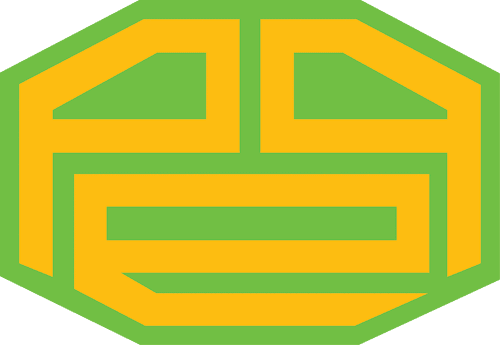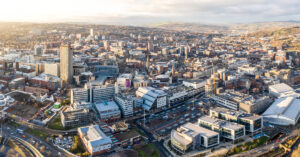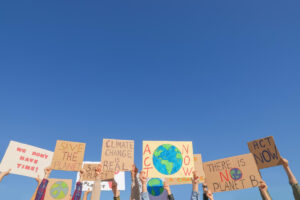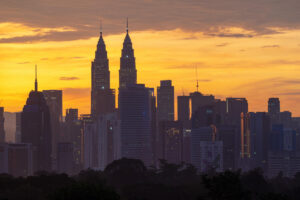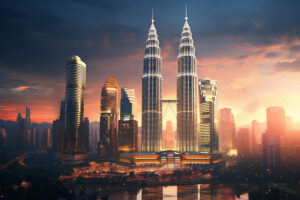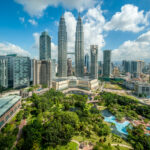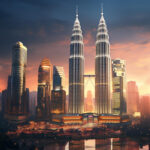In terms of its future-proofing against future pandemic threats, COVID-19 would have wide consequences for urban society. In Malaysia, the future of spatial planning, especially town planning and the mobility facets of economic, family, and social life, desperately needs to be revamped.
People have been increasingly concentrated in some advantageous areas of human civilisation. This has inevitably led to accommodation and trade in goods and services, with transportation all developing around this trend.
This accumulation has helped maximise the use of land, water, electricity, human capital, and other services. Furthermore, it has invariably contributed to high housing densities and high industrial and commercial densities.
When we closely connect livelihoods and economies, so should the spatial structures of urban space. Such examples include the propensity to have optimally used plots of land compressed into houses, employment, industries, and living facilities.
We often describe today’s lifestyle with catchphrases such as “Live, Learn, Work, Play.” Such combining of land use is not bad in itself. Real estate prices have been pushed to artificially high levels by urban intensification. This price hike has caused a vicious cycle that feeds itself by further accelerating the push for ever-greater density and less physical separation among individuals.
Meanwhile, Malaysian city hubs have high-rise urban slums like City One and Selangor Mansion in the Jalan Masjid India area. These areas became hotspots of COVID-19 infection in 2020.
Today’s and Future’s Standard
Today’s standards do not crowd these older apartments at all. Instead, they are built with ‘family units of four’ in mind – not 30 people sleeping six to eight in one room. And they will only continue to fill this market niche in the absence of incentives to redevelop the region. For today’s more portable options, the same planning standard – of ‘four to a family unit’ still prevails.
Like several pandemics before it, Covid-19 might well vanish in a few years. However, it teaches a crucial lesson to town planners in Malaysia. As a biological organism, not by any specific uniqueness, it spreads more readily between people living in close quarters through the plain fact that disease spreads more readily. The time to get it in reverse gear is now.
How can we stop the crowding of our urban communities as a human society?
In urban planning, town planners will take the initiative to create momentum for a new normal and the future.
For any mass revolution to occur, we must first plant the seeds of a change in attitude across the continuum of stakeholders, right down to shaping home/property buyers’ expectations as to what constitutes decent homes and value for money.
In the near term, localised, lower-density growth will see property prices decline to more rational levels. Nonetheless, this will be counterbalanced in the longer term by other factors at hand, such as new transport costs across larger geographies, changing demands for social infrastructure, etc.
Town planners and other experts in Malaysia, including city planning consultants interested in development, will need to reconsider their approach as house buyers’ expectations and preferences change in the future.
This long-term transition could extend through the lifespans of a whole generation of public and private sector city planners.
Town planners must take a step back to decentralise away from already-crowded places. Such places are Kuala Lumpur, Petaling Jaya, Klang, Shah Alam, and Johor Bahru.
They need to embark on some soul-searching, moving back to our moral responsibilities to humanity. Besides disease control, the environment would also benefit from decentralization.
New Ideas
A modern model that weighs income against environmental and social obligation must learn to embrace the manufacturing sector.
One can only successfully apply clean technology through an industrial decentralisation plan in synergistic groupings of sectors that have similar infrastructure needs.
Other major industrial centres should be deconstructed or downsized, aside from a few national significance sectors functioning as mega-complexes, expanding employment and economic prospects around broader geography, and helping to discourage unproductive rural-urban displacement and its associated social evils.
We need a paradigm shift towards tactical, small-clustered development. We can place different but coordinate human actions everywhere to work as one through drastic developments in technologies such as online schooling and high-speed communications.
An industrial firm could have its manufacturing base with a well-trained captive workforce in a remote kampung in Kelantan, its logistics centre in the port of Tanjung Pelepas, its R&D in Cyberjaya, etc. Local communities will then appear with the human capital base serving each city’s advantaged sectors, cohesively adding to the national GDP together.
Instead of pursuing its current misdirected course, we should instead tweak the creative mixing of land uses described earlier towards building rights-sized economic excellence clusters.
Hypermarkets and massive shopping centres may also become things of the past in a decentralised development. Smaller shopping centres in the area will find their balance of online shopping and e-commerce, which did very well during the Movement Control Order (MCO).
Final Thoughts
When lower densities require reduced property costs, it is important to reformulate zoning codes and construction bylaws. We have to start thinking that small is lovely, practical and spacious.
We need a rethink by professionals, developers, policymakers, and the government for decentralisation and lower-intensity growth. While looking at the wider issues of where Malaysia is headed as a country, they have to weigh profit against citizens’ health and well-being.
